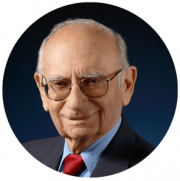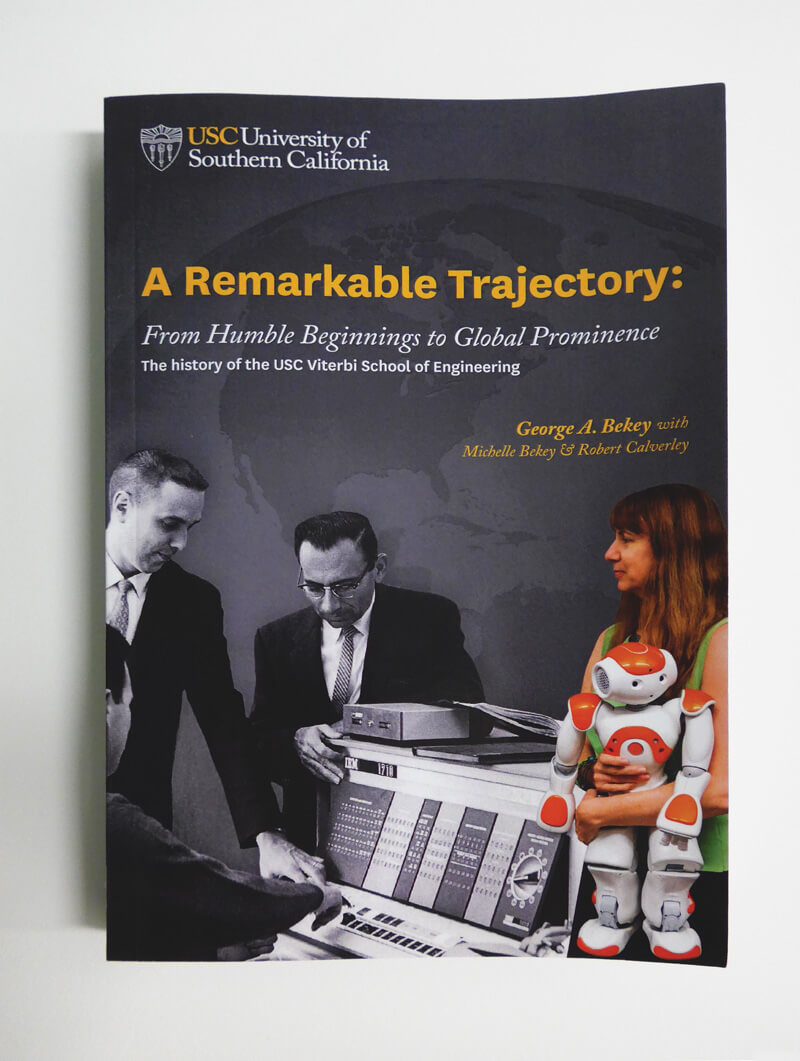A Remarkable Trajectory: From Humble Beginnings to Global Prominence traces the USC Viterbi School of Engineering’s ascendance from the early 1900s to the present. Written by Emeritus Professor George A. Bekey, A Remarkable Trajectory emphasizes the school’s leap from an also-ran institution in the 1950s and 1960s to its current top-tier status. More than 100 interviews with senior faculty are interwoven with anecdotes and observations from Bekey’s 50-plus years of association with USC.
Among the school’s most distinguished faculty, he chaired what became the Ming Hsieh Department of Electrical Engineering (leading its systems group twice) and Computer Science Department, co-founded the Department of Biomedical Engineering and launched the school’s prominent robotics program.
The following excerpt introduces the school’s first transformational dean, Zohrab A. Kaprielian.
In academia, engineering schools often are reputed to attract bland, pedantic types who might otherwise toil anonymously in subterranean research labs. No one could have been farther from that stereotype than Zohrab A. Kaprielian. A man of short stature and colossal vision, Kaprielian was the driving force behind the school’s transformation from a little-recognized, primarily undergraduate training entity to a highly regarded, research-oriented institution. Kaprielian probably stood no taller than five feet, three inches. Yet his 21 years as dean, USC provost and USC vice president had a profound impact on both engineering and USC as a whole.
Kaprielian was born in Aleppo, Syria in 1923, the youngest child in a large family of Armenian refugees. He attended the well-regarded American University of Beirut, where he proved an extremely capable student, and earned his bachelor’s and master’s degrees in applied physics in 1942 and 1943, respectively. Kaprielian then immigrated to the United States. He received his Ph.D. in electrical engineering from the University of California at Berkeley in 1954. The same year, he became a Caltech research fellow studying the properties of artificial dielectrics, a class of insulators used in capacitors and other electrical applications, under Charles H. Papas.
Kaprielian came to USC in 1957 as a visiting assistant professor of electrical engineering. He then was hired and promoted to associate professor in 1958. Outgoing and personable, Kaprielian devoted all his energy to the university for 23 years. He likely would have continued doing so had he not suffered a fatal heart attack in 1981.
Creating a Vision
Kaprielian believed passionately that USC’s School of Engineering could and should be far more outstanding than it was in the late 1950s. He was convinced that we had the potential to be among the better research-oriented engineering schools, and set out to recruit the brightest researchers in carefully selected areas. To ensure that USC would stand out in Southern California, he favored research areas where UCLA and Caltech weren’t particularly strong.
The communications group Kaprielian assembled from Caltech, JPL, Bell Labs, government agencies and other entities was indeed second to none. He did the same thing in aerospace engineering by choosing one very good person and giving him ample funding for new hires.
To push USC forward, Kaprielian often took on his superiors’ work along with his own. He was only an associate professor when I came to interview at USC in 1962. Yet it was Kaprielian who interviewed me, and he who offered me the job. Officially, the electrical engineering department had an acting chair, industrial engineering professor Homer Grant. But Kaprielian, soon promoted to full professor, was already honing his style of managing up.
When he became chair of electrical engineering in 1962, he shouldered much of the dean’s workload. Dean Ingersoll relied on Kaprielian for guidance on administration and fundraising, and the arrangement became so entrenched that Kaprielian actually functioned as a shadow dean for a dozen years. When Kaprielian became dean in 1970, he took on many of the USC provost’s responsibilities. As provost, he assumed duties of the executive vice president; as executive vice president, he did much of the work of the university president. “There are four levels of administration between me and the president of the university, and all of them are occupied by Z. A. Kaprielian,” Electrical Engineering Professor Solomon Golomb said at the time. “We believe in ‘one man, one vote.’ Dr. Kaprielian is the one man, and he has the one vote. ”





